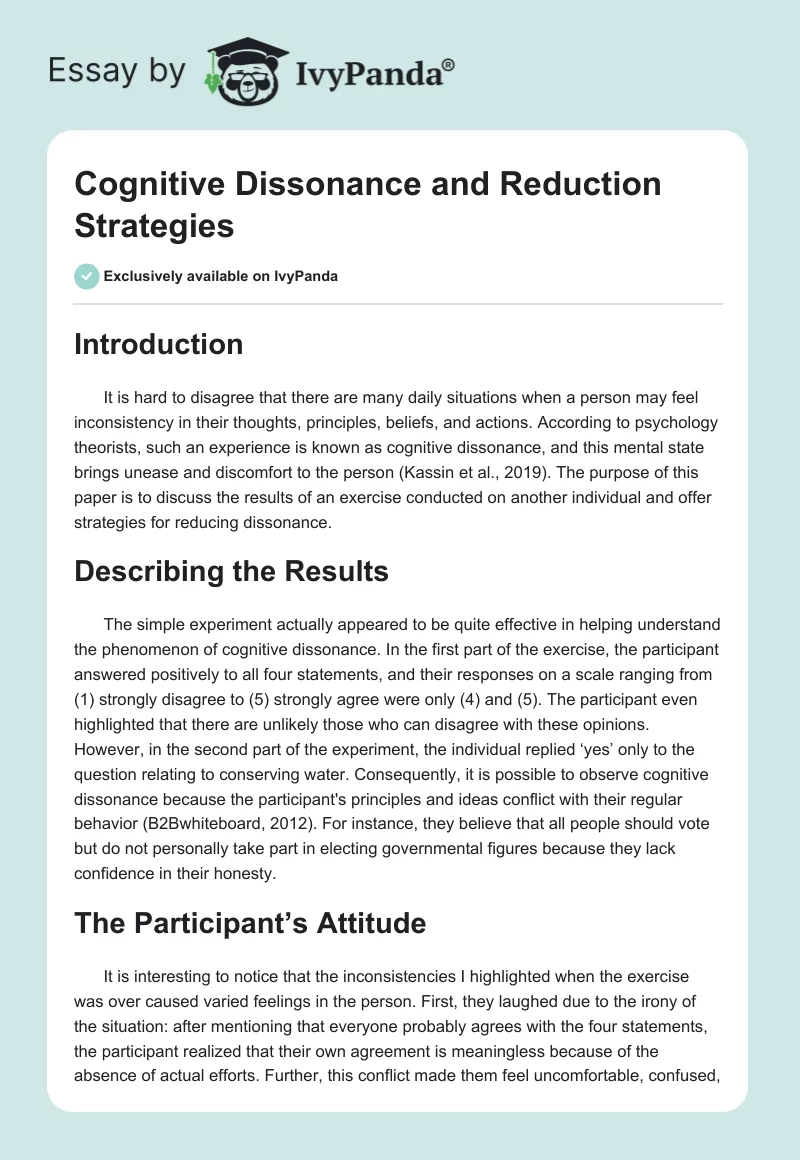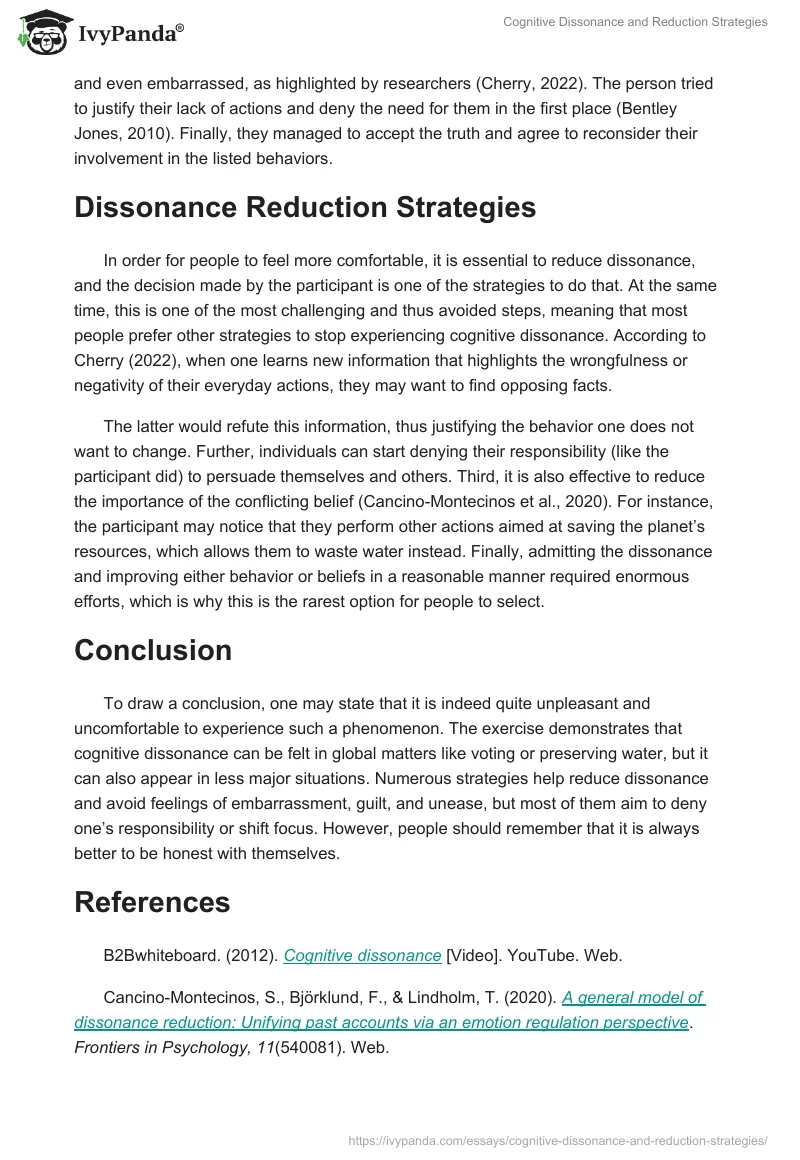Introduction
It is hard to disagree that there are many daily situations when a person may feel inconsistency in their thoughts, principles, beliefs, and actions. According to psychology theorists, such an experience is known as cognitive dissonance, and this mental state brings unease and discomfort to the person (Kassin et al., 2019). The purpose of this paper is to discuss the results of an exercise conducted on another individual and offer strategies for reducing dissonance.
Describing the Results
The simple experiment actually appeared to be quite effective in helping understand the phenomenon of cognitive dissonance. In the first part of the exercise, the participant answered positively to all four statements, and their responses on a scale ranging from (1) strongly disagree to (5) strongly agree were only (4) and (5). The participant even highlighted that there are unlikely those who can disagree with these opinions. However, in the second part of the experiment, the individual replied ‘yes’ only to the question relating to conserving water. Consequently, it is possible to observe cognitive dissonance because the participant’s principles and ideas conflict with their regular behavior (B2Bwhiteboard, 2012). For instance, they believe that all people should vote but do not personally take part in electing governmental figures because they lack confidence in their honesty.
The Participant’s Attitude
It is interesting to notice that the inconsistencies I highlighted when the exercise was over caused varied feelings in the person. First, they laughed due to the irony of the situation: after mentioning that everyone probably agrees with the four statements, the participant realized that their own agreement is meaningless because of the absence of actual efforts. Further, this conflict made them feel uncomfortable, confused, and even embarrassed, as highlighted by researchers (Cherry, 2022). The person tried to justify their lack of actions and deny the need for them in the first place (Bentley Jones, 2010). Finally, they managed to accept the truth and agree to reconsider their involvement in the listed behaviors.
Dissonance Reduction Strategies
In order for people to feel more comfortable, it is essential to reduce dissonance, and the decision made by the participant is one of the strategies to do that. At the same time, this is one of the most challenging and thus avoided steps, meaning that most people prefer other strategies to stop experiencing cognitive dissonance. According to Cherry (2022), when one learns new information that highlights the wrongfulness or negativity of their everyday actions, they may want to find opposing facts.
The latter would refute this information, thus justifying the behavior one does not want to change. Further, individuals can start denying their responsibility (like the participant did) to persuade themselves and others. Third, it is also effective to reduce the importance of the conflicting belief (Cancino-Montecinos et al., 2020). For instance, the participant may notice that they perform other actions aimed at saving the planet’s resources, which allows them to waste water instead. Finally, admitting the dissonance and improving either behavior or beliefs in a reasonable manner required enormous efforts, which is why this is the rarest option for people to select.
Conclusion
To draw a conclusion, one may state that it is indeed quite unpleasant and uncomfortable to experience such a phenomenon. The exercise demonstrates that cognitive dissonance can be felt in global matters like voting or preserving water, but it can also appear in less major situations. Numerous strategies help reduce dissonance and avoid feelings of embarrassment, guilt, and unease, but most of them aim to deny one’s responsibility or shift focus. However, people should remember that it is always better to be honest with themselves.
References
B2Bwhiteboard. (2012). Cognitive dissonance[Video]. YouTube. Web.
Cancino-Montecinos, S., Björklund, F., & Lindholm, T. (2020). A general model of dissonance reduction: Unifying past accounts via an emotion regulation perspective. Frontiers in Psychology, 11(540081). Web.
Cherry, K. (2022). What is cognitive dissonance. Verywell well. Web.
Bentley Jones, J. (2010). A lesson in cognitive dissonance[Video]. YouTube. Web.
Kassin, S., Fein, S., & Hazel, R. M. (2019). Social psychology (11th ed.). Cengage.


